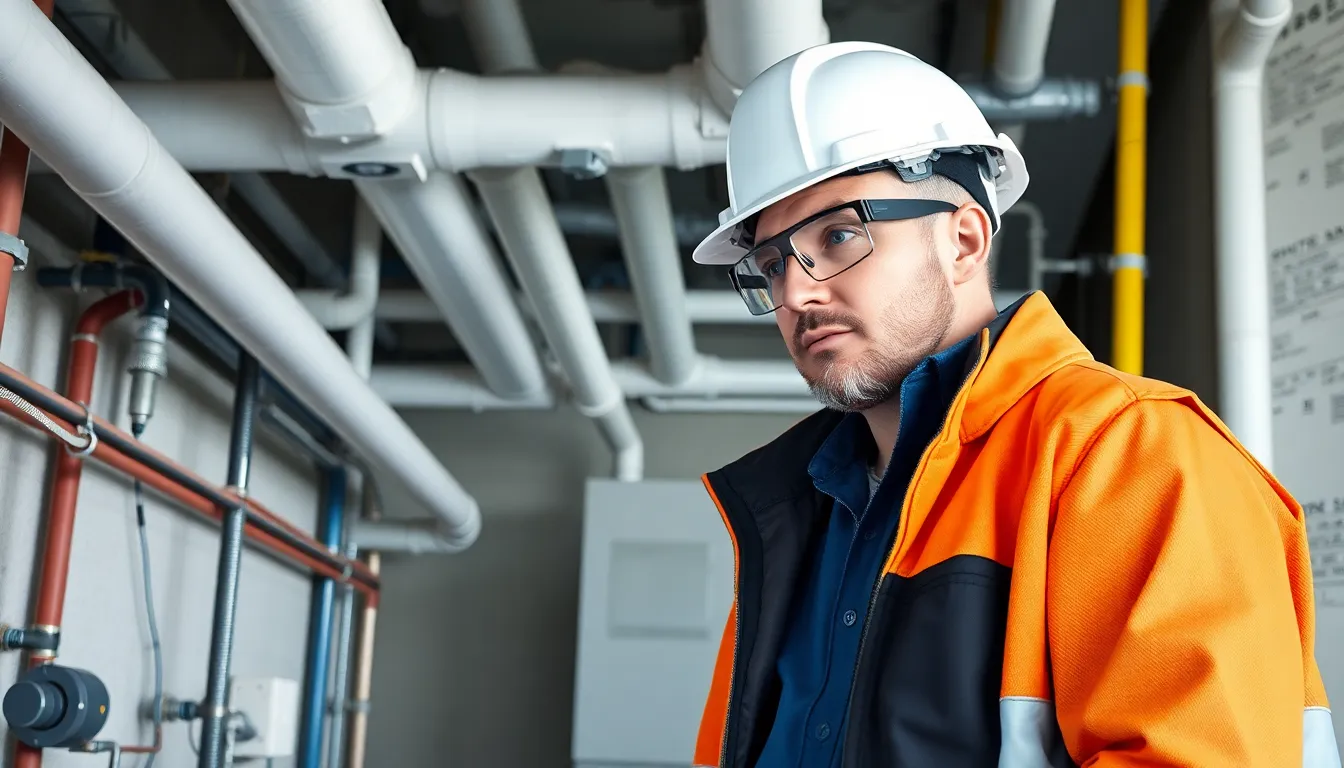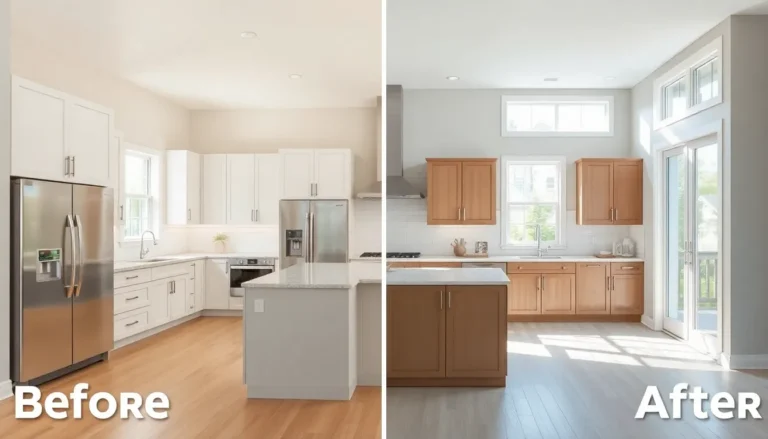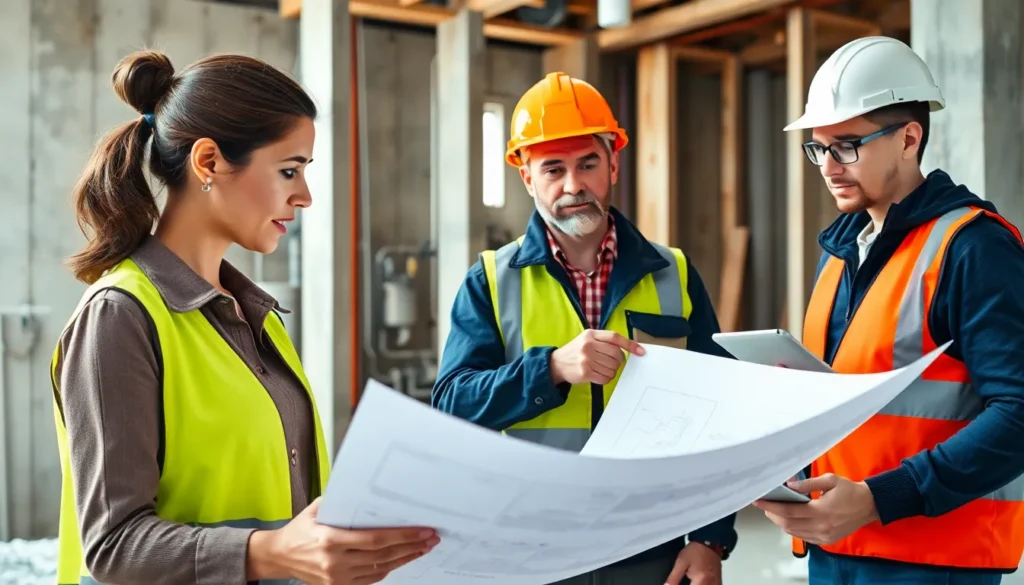Table of Contents
ToggleIn the bustling world of construction and building management, mechanical electrical plumbing (MEP) is the unsung hero that keeps everything running smoothly. Imagine a building without proper plumbing or electrical systems—it’s like a party with no music or snacks. Chaos, right? MEP integrates mechanical systems, electrical wiring, and plumbing into a seamless dance of functionality, ensuring that everything works in harmony.
But let’s be honest: MEP isn’t the most glamorous topic. It doesn’t have the glitz of interior design or the thrill of architectural wonders. Yet, it’s the backbone of any successful project. Understanding MEP isn’t just for engineers; it’s essential for anyone looking to appreciate the magic behind the walls. So buckle up as we dive into the fascinating world of MEP, where pipes, wires, and ductwork come together to create the ultimate building experience.
Overview of Mechanical Electrical Plumbing
Mechanical electrical plumbing (MEP) encompasses the critical systems that ensure building functionality. MEP integrates mechanical systems, electrical systems, and plumbing systems, working together to create an efficient environment.
Definition and Components
Mechanical components include HVAC systems, which manage heating, ventilation, and air conditioning. Electrical components involve wiring, lighting, and power distribution systems. Plumbing components consist of water supply, drainage, and sewage systems. These interconnected systems collaborate to ensure comfort and safety in residential and commercial buildings. Each component plays a vital role in maintaining operational efficiency, making MEP a cornerstone of building infrastructure.
Importance in Construction
MEP systems significantly impact a project’s overall success. Efficient mechanical systems reduce energy consumption, leading to lower utility costs. Well-designed electrical systems enhance safety and reliability. Reliable plumbing systems prevent costly water damage and ensure hygiene. Construction professionals prioritize MEP during the design phase, integrating it seamlessly within the broader building plans. Effective MEP management translates into improved occupant comfort, compliance with safety codes, and increased property value.
Mechanical Systems in MEP

Mechanical systems form the backbone of MEP design, significantly contributing to the efficiency and comfort of a building’s environment. These systems encompass various components, including heating, ventilation, air conditioning, and plumbing.
Heating, Ventilation, and Air Conditioning (HVAC)
HVAC systems function to regulate indoor temperatures and air quality. They include heating units, ventilation fans, and air conditioning units. Heating units provide warmth during cold seasons, while ventilation systems ensure adequate airflow and exchange of stale indoor air with fresh outdoor air. Air conditioning units cool spaces when temperatures rise. Properly designed HVAC systems enhance energy efficiency and reduce operational costs. Efficient systems also promote occupant comfort, providing a stable and pleasant indoor environment.
Plumbing Systems
Plumbing systems manage water supply and waste disposal within a building. These systems include pipes, fixtures, and drainage solutions for both fresh and wastewater. Reliable plumbing ensures uninterrupted water delivery, minimizing the risk of leaks or failures. Proper drainage systems prevent water accumulation, reducing the likelihood of structural damage. Additionally, efficient plumbing systems contribute to hygiene by managing sewage and wastewater effectively. Prioritizing plumbing during the design phase enhances overall building performance, ensuring compliance with health and safety regulations.
Electrical Systems in MEP
Electrical systems play a crucial role in the functioning of buildings. They ensure safety, efficiency, and convenience for occupants.
Wiring and Cabling
Wiring and cabling form the backbone of electrical distribution. Copper and aluminum wires carry current to various circuits, ensuring reliable power delivery. Properly installed systems reduce the risk of electrical failures. Conduits protect wiring from damage, while cable trays facilitate organization and accessibility. Local building codes govern installation standards to maintain safety. Well-planned layouts minimize energy loss and enhance performance. Skilled electricians design systems that accommodate future expansions to meet evolving needs.
Lighting and Power Distribution
Lighting and power distribution enhance functionality and comfort. Energy-efficient LED fixtures reduce electricity consumption while providing adequate illumination. Accurate placement of lighting fixtures creates inviting environments and improves safety. Power distribution systems ensure reliable electricity supply to essential appliances and systems, significantly impacting productivity. Circuit breakers protect against overloads, preventing potential hazards. Smart technology can optimize energy use and reduce costs further. Regular inspections contribute to maintaining safety and ensuring compliance with regulations.
Plumbing Systems in MEP
Plumbing systems play a crucial role in mechanical electrical plumbing (MEP) design, focusing on ensuring efficient water supply and waste management.
Water Supply and Distribution
Water supply and distribution systems deliver potable water throughout a building. These systems consist of pipes, fittings, tanks, and valves. A reliable network of water pipes ensures that every fixture receives adequate pressure and flow. They connect to municipal sources or wells, utilizing pumps as necessary to manage water delivery. Regular maintenance and inspections are essential to prevent leaks, maintaining efficiency and water quality. Properly designed systems accommodate future expansions, aligning with sustainability efforts and reducing energy consumption through efficient designs.
Wastewater Management
Efficient wastewater management systems handle the disposal of sewage and gray water. These systems incorporate gravity or pressurized pipelines, connecting fixtures to treatment facilities. Proper design prevents blockages while ensuring adherence to health regulations. Each component, from drainage pipes to sewer lines, must operate seamlessly to mitigate flooding and structural damage. Regularly scheduled inspections promote long-term functionality, while modern solutions may include recycling systems that align with environmental goals. Investing in effective wastewater management enhances overall building performance and public health.
Challenges and Solutions in MEP
Mechanical electrical plumbing (MEP) faces multiple challenges that require innovative solutions for effective operation.
Coordination Among Disciplines
Coordination among mechanical, electrical, and plumbing disciplines presents challenges in MEP projects. Conflicting schedules frequently arise, complicating timelines and delaying progress. Effective communication serves as a vital tool to mitigate such conflicts, ensuring all teams work harmoniously toward common goals. Building information modeling (BIM) enhances collaboration by allowing for visual planning and real-time updates. This digital approach minimizes errors, aligning the efforts of various disciplines and streamlining project execution. Early involvement of MEP professionals in the design phase fosters proactive problem-solving, reducing the likelihood of costly revisions later.
Sustainability Considerations
Sustainability considerations are increasingly essential in MEP design. Implementing energy-efficient systems significantly lowers operational costs and reduces environmental impact. The integration of renewable energy sources, such as solar power, further enhances sustainability efforts. Water conservation practices are crucial, promoting the use of low-flow fixtures and gray water recycling systems. Regular audits of MEP systems improve efficiency and highlight areas for optimization. Assessments not only ensure compliance with environmental regulations but also promote long-term sustainability benefits for building occupants and the community.
Understanding the significance of mechanical electrical plumbing systems is essential for anyone involved in construction and building management. These systems are the unsung heroes that ensure a building operates smoothly and efficiently. By prioritizing MEP design and implementation, professionals can enhance occupant comfort, improve safety, and contribute to sustainability efforts.
The integration of mechanical, electrical, and plumbing components not only supports the functionality of a space but also boosts property value. As the industry evolves, embracing innovative technologies and practices will be key to overcoming challenges and achieving long-term success in MEP projects. Recognizing the vital role of these systems is crucial for fostering a deeper appreciation of the infrastructure that supports modern living.






